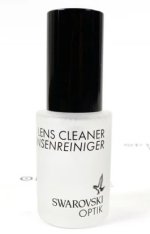Mike Hunter
Well-known member
Hi all
I'd be grateful for any views and feedback from members on whether they have found their NL Pure binoculars misting up on use.
Some background first. I'm a keen world birder and have used Swarovski binoculars for at least 15 years. More recently I was fortunate to be able to spend three months travelling and birding in a variety of habitats, from lowland forest to extended periods on ships.
Optically these are the best 10x42 binoculars out there in my view. Field of view, brightness and image clarity are superb. I'm really pleased I purchased the 10x42 NL Pure for my two ship trips. Through an improved ergonomic design they are lovely to hold, fit comfortably in the hand, and are well balanced. I was able to use them for hours without eye strain.
However, I found a phenomenon I've never experienced in Swarovski binoculars before, and it was a big shock to find that the external glass of the eye lenses misted up easily in certain situations. It typically happened in tough conditions, often when I was walking uphill, in lowland humid forest, where my body heat caused the eye lenses to mist up. Basically if you're 'running hot' then heat transfers to the glass and mists up the eye lens. A birder I was travelling with found the problem so annoying and serious that he's thinking of shifting to Zeiss. Other birders on one of the ships were also reporting concerns.
The central issue appears to be the lens coating, and I've heard Swarovski changed its lens' coatings perhaps in advance of legislation changes? It's not simply a case of cold binoculars being exposed to warm air. I used 8.5x 42 ELs in forest for a decade in equally humid forest conditions and never experienced the misting of the NLs. I also used other binoculars when in the tough conditions and no misting.
I realise there will be many members perfectly happy with their NLs. I'd stress that misting occurs in tough conditions, and if you haven't experienced such tough conditions then you might find this thread odd. I'm really keen to hear from those members that have found their NL Pure binoculars misting up unexpectedly, and when this typically arises.
In my experience I'd summarise thus: brilliant optics but flawed. Many thanks
Mike Hunter
UK
I'd be grateful for any views and feedback from members on whether they have found their NL Pure binoculars misting up on use.
Some background first. I'm a keen world birder and have used Swarovski binoculars for at least 15 years. More recently I was fortunate to be able to spend three months travelling and birding in a variety of habitats, from lowland forest to extended periods on ships.
Optically these are the best 10x42 binoculars out there in my view. Field of view, brightness and image clarity are superb. I'm really pleased I purchased the 10x42 NL Pure for my two ship trips. Through an improved ergonomic design they are lovely to hold, fit comfortably in the hand, and are well balanced. I was able to use them for hours without eye strain.
However, I found a phenomenon I've never experienced in Swarovski binoculars before, and it was a big shock to find that the external glass of the eye lenses misted up easily in certain situations. It typically happened in tough conditions, often when I was walking uphill, in lowland humid forest, where my body heat caused the eye lenses to mist up. Basically if you're 'running hot' then heat transfers to the glass and mists up the eye lens. A birder I was travelling with found the problem so annoying and serious that he's thinking of shifting to Zeiss. Other birders on one of the ships were also reporting concerns.
The central issue appears to be the lens coating, and I've heard Swarovski changed its lens' coatings perhaps in advance of legislation changes? It's not simply a case of cold binoculars being exposed to warm air. I used 8.5x 42 ELs in forest for a decade in equally humid forest conditions and never experienced the misting of the NLs. I also used other binoculars when in the tough conditions and no misting.
I realise there will be many members perfectly happy with their NLs. I'd stress that misting occurs in tough conditions, and if you haven't experienced such tough conditions then you might find this thread odd. I'm really keen to hear from those members that have found their NL Pure binoculars misting up unexpectedly, and when this typically arises.
In my experience I'd summarise thus: brilliant optics but flawed. Many thanks
Mike Hunter
UK
Last edited:












